10 Animals Found In Jordan
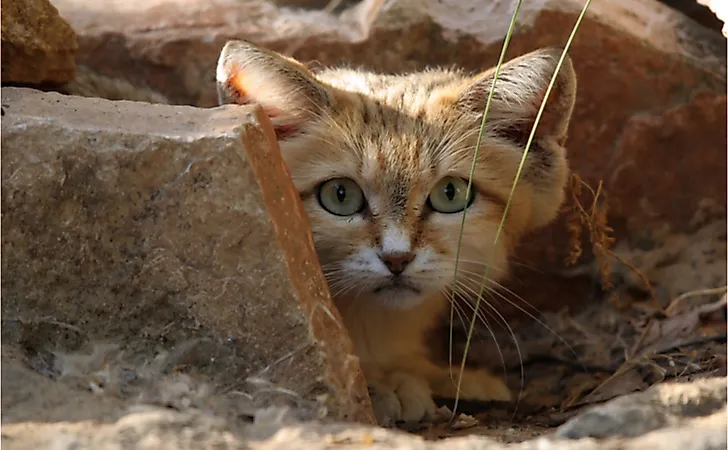
Jordan is not necessarily known for its wildlife, but despite its small size, the country has remarkable biodiversity. The country has four bio-geographic regions that include Irano-Turanic, Mediterranean, Sudanic, and Sahara-Arabian ecosystems that are as a result of the country's location at the intersection of three faunal elements; the Oriental, African, and Palaearctic. The country represents the biogeographic boundaries and extreme distribution limits of several Palaearctic and African mammals. The country is considered as relatively dry, with temperatures ranging between 86 degrees Fahrenheit during summers and 55 degrees Fahrenheit during winters. Deserts occupy a significant part of the country. The country also has mountainous regions and valleys that consist of fertile wetlands.
Arabian Oryx
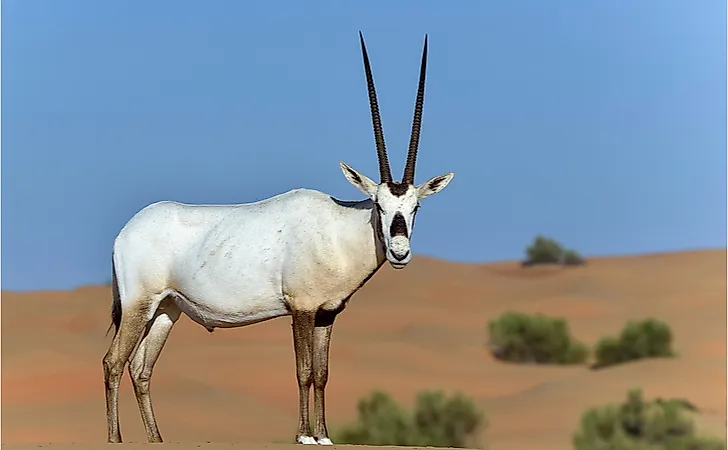
The Arabian Oryx is Jordan's national animal. The medium-sized antelope has a slight shoulder bump, a tufted tail, and long straight horns. The species is found in steppe and desert areas around the Arabian Peninsula. The animal went extinct in Jordan in the 1920s. It was later declared as extinct in the wild in the region in the 1970s. The species was saved through the gradual reintroduction into reserves across the Middle East, including Jordan. The Arabian Oryx is classified as endangered and is facing a high risk of extinction. It was the first species to achieve the status of vulnerable after previously being considered as extinct in the wild.
Striped Hyena
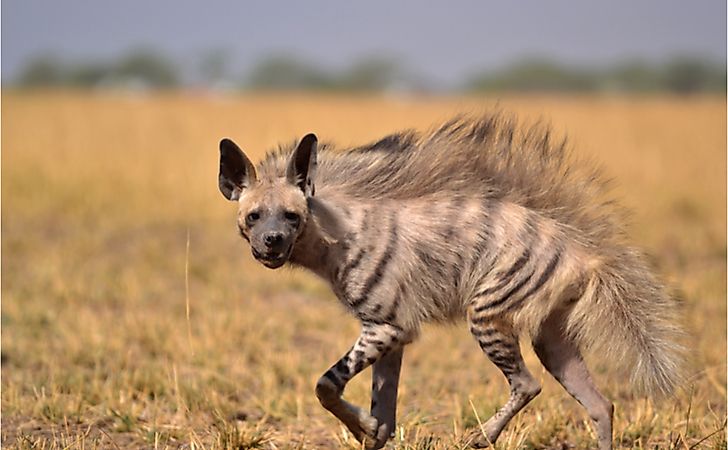
Striped hyenas are distinguished by their coat coloring, which is either brown or gray, with dark stripes that run down their bodies. Striped hyenas also have a big head with big ears and eyes. The species is found in areas with thorn bushes and those with desert-like conditions. They are nocturnal and forage alone or with a companion. The species has a gestation period of ninety days, with females giving birth to several cubs. The population of striped hyenas has, in recent years, been on the decline due to habitat loss and hunting. The species is currently listed as near threatened
Dorcas Gazelle
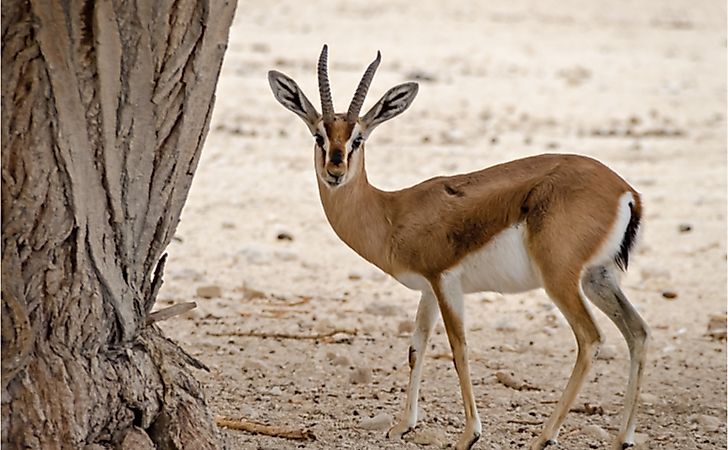
The Dorcas gazelle is a close relative of the Mountain gazelle. Its ears are distinctly long, and it also has curvier horns. They are found in regions such as the Sahara and Negev deserts, and countries like Morocco, Tunisia, Libya, Algeria, Chad, Ethiopia, and Somalia. The species is also found in the Middle East in parts of Sinai, Jordan, and Israel. The subspecies found near the Red Sea can be differentiated from its Northern Sahara counterpart by its reddish-brown color and lighter flanking stripes. They feed on leaves, Acacia pods, and flowers. When threatened, Dorcas gazelles make calls that sound very similar to barking. The gazelles can reach a top speed of 49.7 miles per hour when chased. Its natural predators include the cheetah, lion, and leopard. The biggest threat facing the species is habitat destruction.
Sand Cat
The sand cat is mainly found in desserts such as the Arabian and Sahara deserts. Sand cats have long fur on their paws, which protects them from the hot desert sands. They are adapted to desert conditions and can tolerate extreme cold and hot temperatures. Typically, they go hunting for rodents, lizards, and insects during the night and hide in the shade during the day. They have distinctive pinnae and have a highly developed sense of hearing that can track the underground movements of its prey.
Egyptian Mongoose
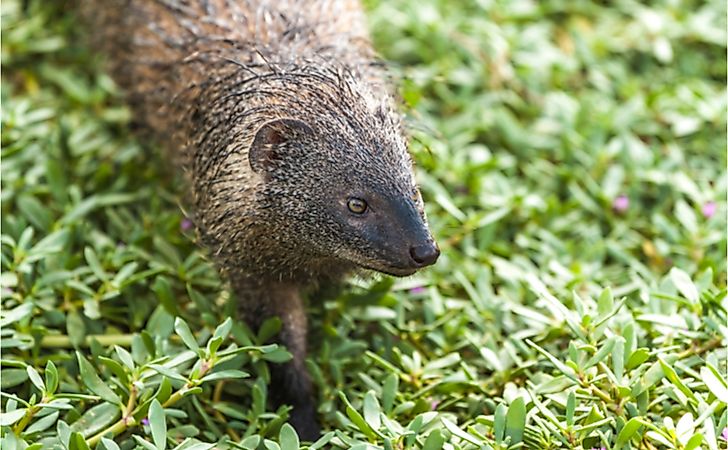
The Egyptian mongoose is found in savannahs, shrub thickets, rocky areas, and forested areas near water sources. They have a body length of 18 to 23 inches and a height of up to 22 inches. Their tails are bushy and have a length of between 12 and 20 inches. Their coat is reddish-brown and possesses yellow dots. The Egyptian mongoose also has a pointed snout, and their eyes are encircled by bare skin. Their diet includes birds, fruit, rodents, fish, amphibians, insects, and larvae.
Honey Badger
The honey badger is widely distributed across parts of Africa, Southwest Asia, and India. Honey badgers have little resemblance to other badgers. The species has a body length of between 22 and 30 inches and a shoulder height of between 9 and 11 inches. Their tails measure 4.7 to 11.8 inches. The honey badger's head is small and flat while its legs are short and sturdy. It is also distinctly broad across its back. The species has a wide diet range that includes honey, snakes, tortoises, frogs, lizards, birds, eggs, rodents, roots, berries, and insects. They have ferocious defensive abilities and are ranked as the most fearless animal species. They have few natural predators.
Nubian Ibex
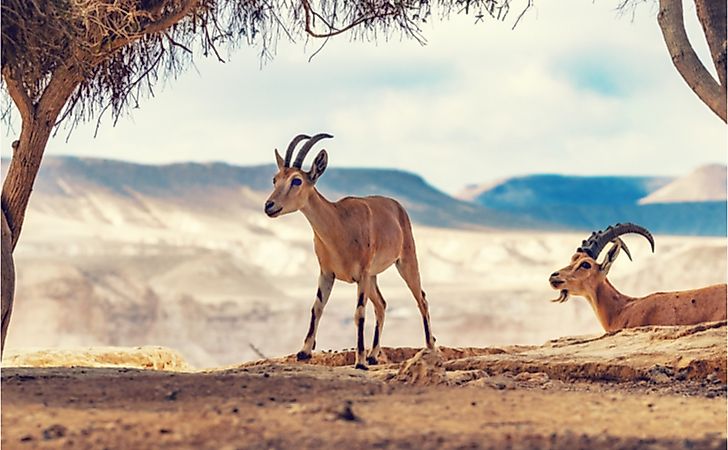
The Nubian Ibex has a distinct pair of horns that arch backward. Males have longer horns that measure about 48 inches while females have horns measuring 14 inches long. The species is found in Northern Africa and Arabia in countries including Jordan, Ethiopia, Israel, Egypt, Yemen, Saudi Arabia, and Oman.
Goitered Gazelle
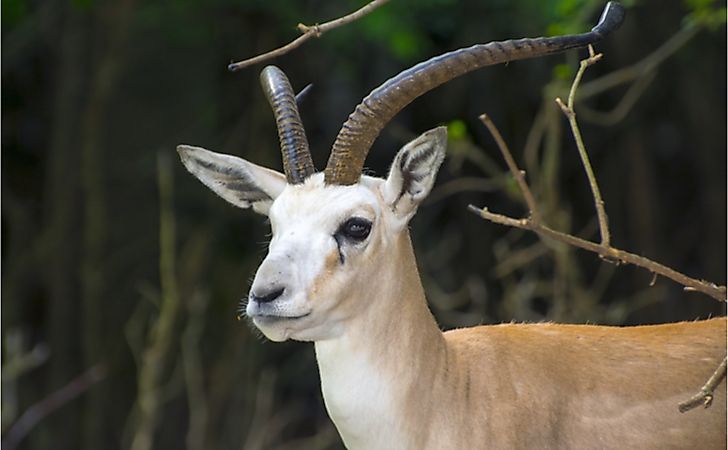
The goitered gazelle gets its name from its neck, which is swollen, particularly during the mating season. The species is found in sandy deserts, limestone plateaus, and gravel plains.
Mountain Gazelle
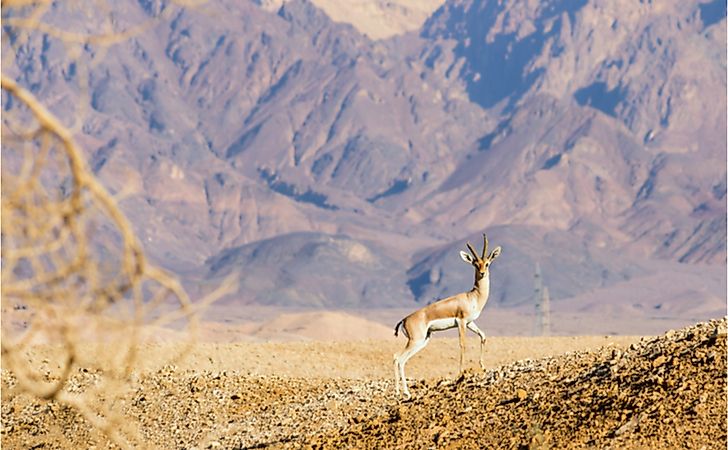
The mountain gazelles are mainly found in Israel, the Golan Heights, the west bank, parts of Jordan, and Turkey. They are unique in that both males and females have horns. The gazelles prefer living in mountains and hilltops and are adapted to dry and desert conditions.
Golden Jackal
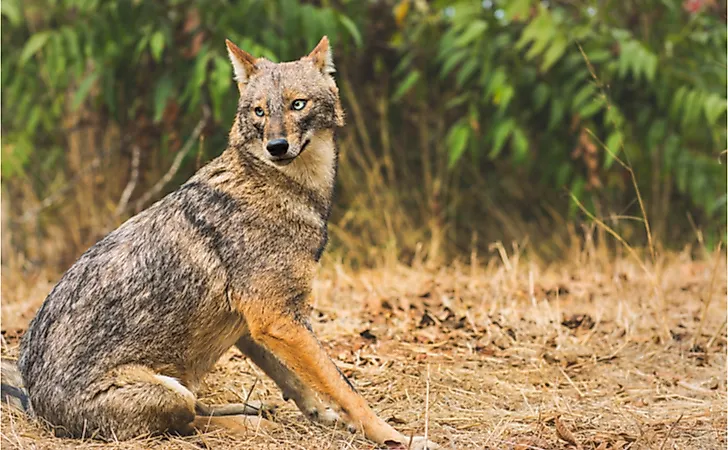
The golden jackal, which is also known as the Asiatic Jackal, is found in East and North Africa, Southern Asia, and South-Eastern Europe. The golden jackals prefer dry open landscapes and scavenge by following the tracks of large predators.
Conservation
Jordan is home to many endangered species of wildlife. In 1966, the Royal Society for the Conservation of Nature was set up to safeguard the nation's natural resources. The country has also set up several protected nature reserves in various habitats that suit the country's diverse wildlife. The Al Ma'wa wildlife sanctuary with help from the Princess Alia Foundation rescues trafficked and abused animals throughout the region. The sanctuary is currently home to several animal species, including the Syrian brown bear, tigers, and lions. Some animals, such as lions, were rescued from a region with human conflict, where they were starving and had only known metal and concrete enclosures. Experts believe that the animals might be psychologically disturbed due to their traumatic past. However, they seem to be adjusting well to their new homes as the lions love feeling the trees and branches around them and putting their heads up.











